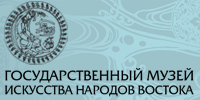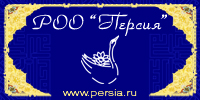
Summary
«Yakutia», a picture story by Svetlana Ryzhakova, opens this issue as our «Impressions» section.
Writings
- Mikhail Volpe. Medieval Ethiopia as Seen by a Portuguese Jesuit. The author presents the notes left by Hieronymus Lobo, a Catholic missionary of the 17th century who had lived in Ethiopia for quite a long time. This work is one of the rare documents produced by an eye-witness who describes, in a rather entertaining fashion, the African empire of those times. The fragments from P. Hieronymus Lobo’s notes are published in Russian translation for the first time.
- Andrey Tanaseychuk. The Return of Hearn. A son of an Irishman and a Greek woman, citizen of the USA and Japanese patriot, in the early 20th century Lafcadio Hearn became known in the whole world, including Russia, as the scholar and promoter of Japanese culture, the author of stories about magicians, ghosts, and spirits, which are full of Japanese mysticism. We publish Russian translations of the four Hearn’s fairy tales, which provide a glimpse of the nature of his unusual prose.
The Land of Orient
- Viktor Pogadaev. The Light Moonkite is Circling. In olden times, the observation of flying kites was a kind of special meditation; the people also launched kites in order to frighten away evil forces, and to ensure good crops and health. In modern Malaysia, a kite festival is held every year, which features thousands of these light paper masterpieces, flying in the sky.
- Tatyana Filatova. His Majesty Etiquette, or Russian Diplomats at the Court of Abbas the Great. The receptions at the court of Shah Abbas the Great of Persia (17th century), which were accompanied by full table, music, and performances of women dancers, had been an ordeal for Russian diplomats. Russian court etiquette did not allow such liberties, which quite often gave rise to diplomatic complications in the relations between the two countries.
- Tatyana Anikeeva. The Century of Turkish Folk Story. The folk story, which for long had lived in Turkey in oral form, in the 19th century started to appear in print in the form of cheap lithographed books. These books with naive, sometimes primitive illustrations presented two basic types of folk story, the «heroic» and the «romantic» tales.
- Dmitriy Kapustin. Remembering the Rose Town. Petra, which used to be a capital of Nabataean Kingdom, is one of the most known world cultural heritage sites. Even today, when the town had largely lost its former appearance, it never fails to amaze spectators.
- Yelena Voytishek. Tea Childhood Entertainment. The author is focused on the «seven rituals», which are established in the tea art of Japan in order to train one’s spiritual and physical abilities. The description of these ceremonies is based on the personal experience of the author, who took part in all of the «seven rituals».
- Yuliy Khudyakov. A Fortress in Central Tianshan. Archaeological findings from the excavations of medieval fortress of Koshoy Korgon (Kyrgyzstan) formed the collection of the local history museum, which had been created not far from the site.
- Andrey Strelkov. The Sermon on Military Weaponry in Kalachakra Tantra. The text, which reveals the teaching of Kalacharka Tantra, devotes quite a space to the future battle of the King of Shambhala with the forces of evil and ignorance. The author analyses the military weaponry mentioned in the text.
- Dmitriy Feldman. «They Managed to Prove in Deed Their Honesty and Loyalty...» The article presents the community of Karaites, a small nation that had been living in Crimea from times immemorial. One of the memorable pages in the history of the Karaites in their action in support of their new motherland, Russian Empire, in the times of the Crimean War
(1953–1856). - Aleksey Podtserob. Through the Great Eastern Erg. An account of the auto rally through the northern fringe of Sahara.
- Yelena Katasonova. Edible Toys and Talking Dolls. Japanese culture in search of new ways in the times of global economic crisis.
- Olga Al Kattan. Sun in the Blood. Observations and notes of the Arabic Orient, the mentality of its people, the attitude towards women, children and relatives, the marriage customs, and the everyday life in the cities. «Here emotions conquer reason, joy and sorrow walk side by side, the generosity of soul and hospitality are squared.»
- Yekaterina Mikhaylova. Mummies, Treasures, and Knights of Fortune. According to the author, more than 500 motion pictures about Ancient Egypt had been filmed in all the time of the cinema’s existence. These include the movies on Biblical subjects, the flicks about mummies and transmigration of souls, about pharaohs and priests, about the adventures of archaeologists and knights of fortune on the banks of the Nile.
- Svetlana Khromchenko. The Melody of Verse, Colour, and Line. The author describes the unique publication that recently appeared, the poetry by Matsuo Basho together with the calligraphy by Ryuseki Morimoto and graphics by Russian artist May Miturich.
- Valentina Chernavskaya. A New Life of the «Impartial Contemplation...» Gerasim Lebedev was the author of the first Russian scholarly account of India and its culture (1805). More than 200 years later, the second edition of this book appeared in Yaroslavl’, the birthplace of the author who is still remembered and revered in India.
- The Antidote for «Orientalism». The interview with Irina Prokof’yeva, the leader of creative translators’ team, about the second Russian publication of the works by Humayun Ahmed (Bangladesh).
Our «Orientnet» section features the review of web-resources on Assyria and Assyrians.
Please e-mail your wishes, suggestions and comments to the following address: orientnet@rsl.ru.
You can find the summaries of the previous issues online, by visiting our section of the Russian State Library web-site: http://orient.rsl.ru/en/






